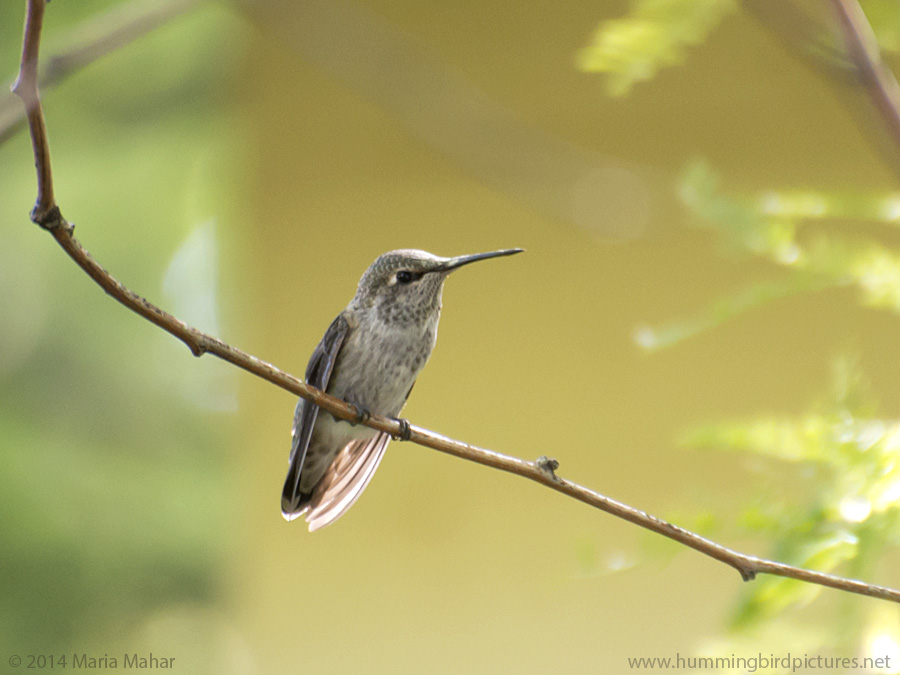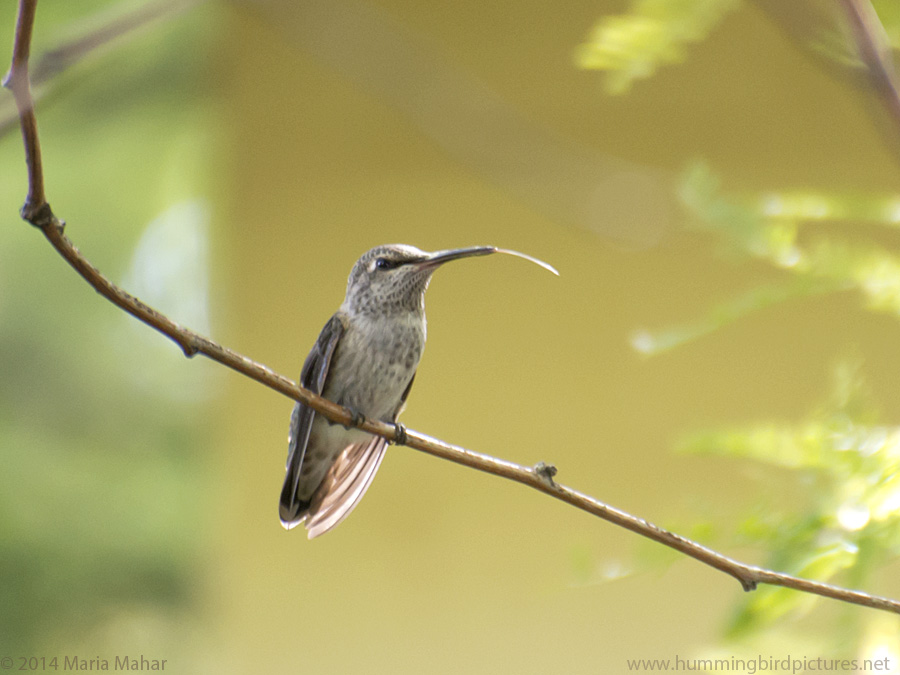Here’s a look at a hummingbird tongue. This young hummingbird took a quick break from feeding on flowers to perch.
If you see a hummingbird perch immediately after feeding from a flower or feeder, that’s a good time to watch for the long hummingbird tongue. The hummingbird extends its tongue out for a second, then draws it back in. It might do this a few, quick times, then it might move onto cleaning its feathers (preening). Sometimes the tongue is visible when the bird is preening.
Broad-tailed Hummingbird tongue
This young Broad-tailed Hummingbird was preening and out came its tongue. It can be tough to see the tongue since it is mostly transparent.
It’s funny to see a hummingbird tongue. And interesting, even to scientists. Biologists are still working out just how the hummingbird tongue does its job.
Hummingbird tongue
The hummingbird tongue has grooves, is very flexible, and splits at the tip. Biologists are using high speed video cameras to look at how the tongue captures and moves nectar. The main question seems to be whether the hummingbird tongue uses “capillary action” or traps fluid or both.
With “capillary action”, the idea is that the tongue does not work like a straw but that the tongue’s grooves and shape allow the nectar to flow upward. Think of capillary action like the nectar creeping up the tongue (very quickly) once the tip of the tongue is in nectar. This idea has been around for many, many years.
Then a study came out in 2011 that showed something new. The study showed that the split tongue tip opens when it touches nectar. The tongue tip then closes when the tongue is drawn back into the beak. This traps the nectar. The biologists think the structure of the tongue makes the trap.
This was followed by a study in 2012 that found capillary action was also at work. Go here for the full 2011 technical article and here for the full 2012 technical article.
So, for now, it seems like the tongue uses both capillary action and fluid trapping.
Perhaps information gathered by studying the hummingbird tongue will be used in future engineering designs for moving fluids. Or maybe put to use in designing even better feeders.
Thanks for coming by. Check out some of our other picture posts or return home.


